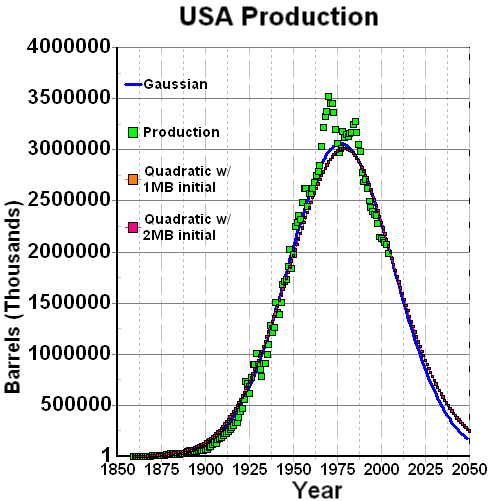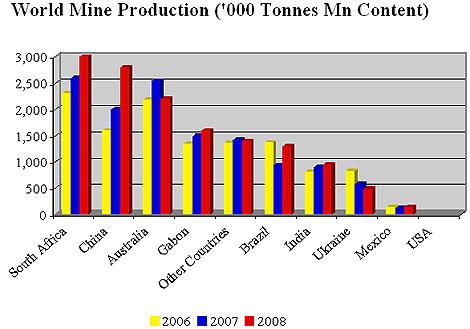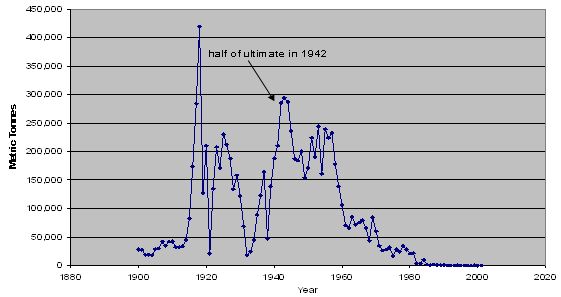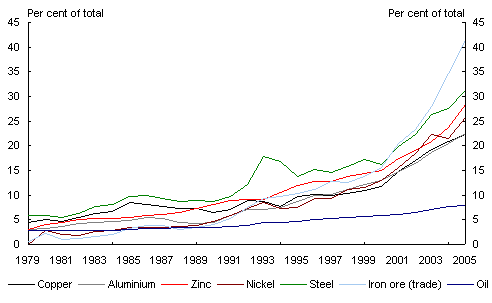 Dear Congressperson, when
will resource X run out. Dear Congressperson, when
will resource X run out.
Congressperson says "oh don't worry, Resource X will be around for 100 years because 100/1 (R/r) = 100 - even I can do that math - and I will just ignore that small 5% deal that you claim
exists"
The correct equation for calculating the exponential exhaustion timescale of any resource (should be required knowledge for any one elected to congress): where k = growth rate R = total resource available ro = initial consumption rate The derivation of this equation Back to congressperson speak: "Gee that's a complicated equation I am not sure I understand it nor how to use it (don't worry there's in app for that) so I think I will just continue to ignore that. Life is much simpler when everything is linear and honestly, I don't think the 5% growth rate is a big deal. So I use 1.05 units next year, I still have about 99 left - what's the big deal" Well, let's first consider that question in a historical context.  Let's start out with the curve for US Oil production in the lower 48 States. Note that peak production occurs on a timescale of
1/2 of Te as the production curve is assumed to be symmetric. In the real world, when resources reach peak production, prices tend to
go up which can then serve to lower consumption and extend the exhaustion timescale. Let's start out with the curve for US Oil production in the lower 48 States. Note that peak production occurs on a timescale of
1/2 of Te as the production curve is assumed to be symmetric. In the real world, when resources reach peak production, prices tend to
go up which can then serve to lower consumption and extend the exhaustion timescale.In 1956, M. King Hubbert published an ignored paper based on this methodology as applied to US Oil production. In that paper he assumed the following:
We can gain further insight on this methodology by using the following "app" Excel template When you first open the spreadsheet you will see the 5% growth rate scenario that starts with R/r = 100. Please now mail your congressperson to tell them that you run out of resource X in 35 years not 100 years. Gee, I guess that 5% thingie does make a difference .... In the following examples you are to only change the value that are in cells A2, B2, and C2. If you change any of the others that you have overwritten the formula for that cell and will ahve to redownload the spreadsheet to continue, Examples to do in this template:
The most serious material scarcity that the world faces (but again no one believes) is that of steel. Steel is still the main building material for almost all the world's infrastructure. Eventually steel will be replaced by carbon fiber but that is at least 50 years away. Steel is basically Iron Ore plus some alloy (zinc, tin, manganese) and among these, manganese is the most widely used alloy. Averging together a few estimates suggests that in the Year 2012, R/r for steel was 150. The global rate of usage of iron ore for the making of steel is shown below along with an inset that shows the growth rate in various 5 year periods. Clearly the growth rate in each period is different (due to market and demand conditions). However, while it once appeared that the use of steel was leveling off (1980--2000) from an earlier steep rise, the emergence of China has strongly changed the steel market and if it weren't for the global economic meltdown of 2009, the rates would be even higher. Currently the world demand for Iron Ore exceeds the available supply. This has lead the development of new projects like The Mesabi Nugget Project So for steel exhaustion we can envision two scenarios starting in 2012 with R/r = 150:
The issue of steel production is directly associated with the reserves of Manganese that are available. This information can be found here: Manganese For the case of manganese use in the production of steel, R/r is about 40 so go back into the spread sheet and use 40.  Are we screwed or what? Are we screwed or what?
Clearly manganese based steel is on the verge of running out which has created a strong increase in the price of manganese in world markets. This is the general market reaction when you get past peak production. The chart below shows the global manganese market over the last 8 years. You can clearly see the factor of 3 price increase from 2005 to 2007! That then was impacted by the global economic meltdown (history will show just what a big deal this actually is) as construction slowed down and demand for manganese went down and so did the price. As the graphic below shows, the US no longer produces and Manganese and so we have to import this in order to make Steel in the US:
 In fact US MN production stops in 1980!  We will examine the resource shortage of Critial Metals later in this course but for now everyone should be Be very aware of this issue which is a little reported fact in US Media Rare Earth Minerals are required in most aspects of a scalable green economy!
Back to Congress: The basic problem is that we substitute Disney's First Law for this arithmetic reality of resource depletion.
|
